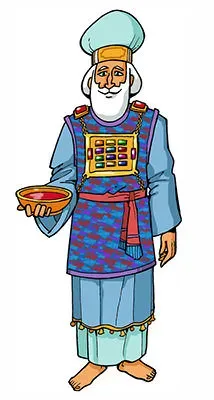 Very early on, the religious nature of man led to his use of precious stones in connection with worship. The most valuable and elegant objects were often used for sacred purposes. In the book of Exodus, we see evidence of this way of thinking from the account of the High-priest's breastplate, and the gems placed on the shrines in the wilderness by the Israel-ites. In the visions of Ezekiel the prophet and the writings describing New Jerusalem in the book of Revelation, we also see this religious association of precious stones with the Divine Glory. Precious gemstones, however, have been associated with many different religious practices aside from the ones discussed above. Evidence of this appears in the Koran, the Talmud, and other similar writings. Gemstones have also been dedicated to many deities. Even today, these symbolic ideas continue to exist in religious jewelry.
Very early on, the religious nature of man led to his use of precious stones in connection with worship. The most valuable and elegant objects were often used for sacred purposes. In the book of Exodus, we see evidence of this way of thinking from the account of the High-priest's breastplate, and the gems placed on the shrines in the wilderness by the Israel-ites. In the visions of Ezekiel the prophet and the writings describing New Jerusalem in the book of Revelation, we also see this religious association of precious stones with the Divine Glory. Precious gemstones, however, have been associated with many different religious practices aside from the ones discussed above. Evidence of this appears in the Koran, the Talmud, and other similar writings. Gemstones have also been dedicated to many deities. Even today, these symbolic ideas continue to exist in religious jewelry.
 References to gemstones are found in numerous revered writings throughout history. In Ezekiel I, 26, and Exodus XXIV, we read of an appearance of the God of Israel and the pavement beneath his feet, which is compared to the color of
References to gemstones are found in numerous revered writings throughout history. In Ezekiel I, 26, and Exodus XXIV, we read of an appearance of the God of Israel and the pavement beneath his feet, which is compared to the color of ![]() sapphire. Furthermore, in the Apocalypse, Apostle John describes the Great White Throne as being "surrounded by a rainbow like an
sapphire. Furthermore, in the Apocalypse, Apostle John describes the Great White Throne as being "surrounded by a rainbow like an ![]() emerald."""
emerald."""
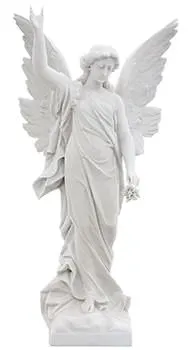 The Rabbinical writings, instead of the simple grandeur of these biblical comparisons, give us many fantastic ideas. In these writings, the stones on the breastplate are sacred to twelve angels who guard the gates of Paradise. Extraordinary tales are written about the brilliant gems in the tent of Abraham and the arc of Noah. Mohammedan legend represents every different heaven with a specific precious stone. In the Middle Ages, these religious ideas became interwoven with a variety of medical, astrological, and alchemistic superstitions.
The Rabbinical writings, instead of the simple grandeur of these biblical comparisons, give us many fantastic ideas. In these writings, the stones on the breastplate are sacred to twelve angels who guard the gates of Paradise. Extraordinary tales are written about the brilliant gems in the tent of Abraham and the arc of Noah. Mohammedan legend represents every different heaven with a specific precious stone. In the Middle Ages, these religious ideas became interwoven with a variety of medical, astrological, and alchemistic superstitions.
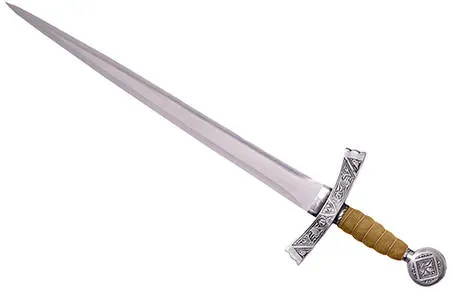 The Jewish historian Josephus (37-95 A.D.) must have seen the high priest wearing his elaborate vestments as he wrote that it was "adorned with twelve stones of exceptional size and beauty, a decoration not easily to be acquired, on account of its enormous value."" However, these gems were not just rare and costly; they also possessed fantastic and miraculous powers. Writing about 400 A.D., St. Epiphanius, the Bishop of Constantia, tells the tale of a marvelous adamas, worn on the breast of the high priest. This man showed off his gorgeous vestments to many people- at the feasts of Pascha, Pentecost, and Tabernacles. This adamas was called ""Declaration"" because, by its appearance, it demonstrated the fate that God had in store for the people. If the people were corrupt and contrary, the stone turned into a dull color, which predicted death by disease. The stone could also become the color of blood, signifying that the people would die by a sword. If the stone shone brightly, however, it meant that the people had done no wrong."
The Jewish historian Josephus (37-95 A.D.) must have seen the high priest wearing his elaborate vestments as he wrote that it was "adorned with twelve stones of exceptional size and beauty, a decoration not easily to be acquired, on account of its enormous value."" However, these gems were not just rare and costly; they also possessed fantastic and miraculous powers. Writing about 400 A.D., St. Epiphanius, the Bishop of Constantia, tells the tale of a marvelous adamas, worn on the breast of the high priest. This man showed off his gorgeous vestments to many people- at the feasts of Pascha, Pentecost, and Tabernacles. This adamas was called ""Declaration"" because, by its appearance, it demonstrated the fate that God had in store for the people. If the people were corrupt and contrary, the stone turned into a dull color, which predicted death by disease. The stone could also become the color of blood, signifying that the people would die by a sword. If the stone shone brightly, however, it meant that the people had done no wrong."
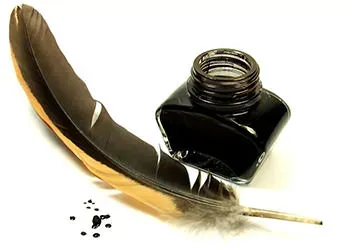 When Moses wanted to engrave the names of the twelve tribes of Israel on the stones of the breastplate, it is said that he had recourse to the miraculous Shamir. First, the names were traced in ink on the stones, and the Shamir was then passed over them. The result of this was that the traced inscriptions became engraved on the gemstones. Proof of the magical character of this operation came from the fact that no particles of the gems were removed in this process.
When Moses wanted to engrave the names of the twelve tribes of Israel on the stones of the breastplate, it is said that he had recourse to the miraculous Shamir. First, the names were traced in ink on the stones, and the Shamir was then passed over them. The result of this was that the traced inscriptions became engraved on the gemstones. Proof of the magical character of this operation came from the fact that no particles of the gems were removed in this process.
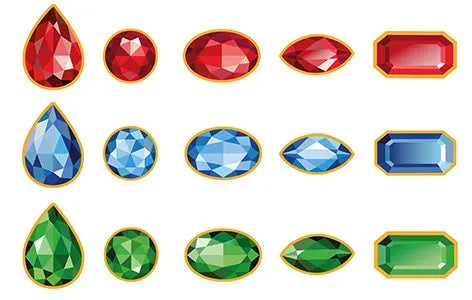 There is evidence of arguments against the use of rare and expensive stones to decorate the breastplate. When folded, the breastplate measured eight to nine inches in each direction. We can assume therefore that the part of the breastplate adorned by gemstones may have measured around two by two and a half inches. It is not likely that precious stones like the
There is evidence of arguments against the use of rare and expensive stones to decorate the breastplate. When folded, the breastplate measured eight to nine inches in each direction. We can assume therefore that the part of the breastplate adorned by gemstones may have measured around two by two and a half inches. It is not likely that precious stones like the ![]() sapphire, the
sapphire, the ![]() ruby, or the
ruby, or the ![]() emerald would have been available in these dimensions during the time of Moses. What must also be considered, is the amount of difficulty required to engrave these very hard stones using the appliances the Hebrews had at the time. However, there is good reason to believe that after the Babylonian captivity, a new breastplate was made that was easier to place precious gemstones on. We must also bear in mind that in those periods, perfection was not as great a requirement as was richness of color.
emerald would have been available in these dimensions during the time of Moses. What must also be considered, is the amount of difficulty required to engrave these very hard stones using the appliances the Hebrews had at the time. However, there is good reason to believe that after the Babylonian captivity, a new breastplate was made that was easier to place precious gemstones on. We must also bear in mind that in those periods, perfection was not as great a requirement as was richness of color.
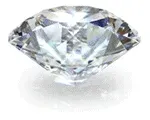 Cornelius Van den Steen (Cornelius a Lapide, 1567-1637), a Flemish Jesuit who wrote a commentary on Exodus, discussed the issue of the
Cornelius Van den Steen (Cornelius a Lapide, 1567-1637), a Flemish Jesuit who wrote a commentary on Exodus, discussed the issue of the ![]() diamond on the High Priest's breastplate. He suggested that since the stone had to have the name of a tribe inscribed in it, it had to be of a certain size, which would cost around a hundred thousand gold crowns. Where would the Hebrew slaves, coming out of Egypt, get so much money, and where would they find a diamond of such large size? Furthermore, the diamond would drive a wedge between the tribes, since the tribe that was assigned to the diamond would become too proud, and others would be filled with hatred and envy. After all, "the diamond is the Queen gem of all the gems."""
diamond on the High Priest's breastplate. He suggested that since the stone had to have the name of a tribe inscribed in it, it had to be of a certain size, which would cost around a hundred thousand gold crowns. Where would the Hebrew slaves, coming out of Egypt, get so much money, and where would they find a diamond of such large size? Furthermore, the diamond would drive a wedge between the tribes, since the tribe that was assigned to the diamond would become too proud, and others would be filled with hatred and envy. After all, "the diamond is the Queen gem of all the gems."""
 Dr. Moses Gaster, Chief Rabbi of the Spanish and Portuguese Jews in England, discovered proof that the breastplate was used to reveal the guilt of an offender. In the Samaritan version of the book of Joshua, it is described how Achan stole a golden idol from a temple in Jericho and how the breastplate's stones lost their luster and grew dim when his name was mentioned.
Dr. Moses Gaster, Chief Rabbi of the Spanish and Portuguese Jews in England, discovered proof that the breastplate was used to reveal the guilt of an offender. In the Samaritan version of the book of Joshua, it is described how Achan stole a golden idol from a temple in Jericho and how the breastplate's stones lost their luster and grew dim when his name was mentioned.
 The breastplate had the Urim and Thummim, the mystical oracle, enclosed inside it. St. Augustine (354-450 A.D.) acknowledged the difficulty in understanding the exact meaning of the words and their power. He believed that it was a single stone that would change color in response to a question. Another opinion was that the words themselves, "Urim and Thummim,"" were inscribed on the breastplate."
The breastplate had the Urim and Thummim, the mystical oracle, enclosed inside it. St. Augustine (354-450 A.D.) acknowledged the difficulty in understanding the exact meaning of the words and their power. He believed that it was a single stone that would change color in response to a question. Another opinion was that the words themselves, "Urim and Thummim,"" were inscribed on the breastplate."
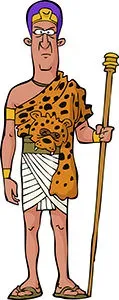 Many opinions have been formed as to the origin of the breastplate, with Egypt being the most probable. A similar breast-ornament, worn by the high priest of Memphis, was found in an Egyptian relief, as early as 4,000 BCE. It consisted of twelve tiny balls or crosses, corresponding to Egyptian hieroglyphics. We do not know if precious stones were used in this breastplate, but we do know it contained twelve stones, just like the Hebrew breastplate. This similarity suggests a common origin, though does not necessarily prove it.
Many opinions have been formed as to the origin of the breastplate, with Egypt being the most probable. A similar breast-ornament, worn by the high priest of Memphis, was found in an Egyptian relief, as early as 4,000 BCE. It consisted of twelve tiny balls or crosses, corresponding to Egyptian hieroglyphics. We do not know if precious stones were used in this breastplate, but we do know it contained twelve stones, just like the Hebrew breastplate. This similarity suggests a common origin, though does not necessarily prove it.
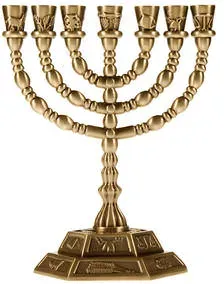 After Titus had captured Jerusalem in 70 A.D., the temple's treasures were carried off to Rome and according to Josephus, the breastplate was kept in the Temple of Concord. The historians are not entirely sure whose hands the breastplate fell into when Rome was later sacked in 410 A.D. by the Visigoths, and then again by the Vandals in 455 A.D. Procopius, the last major scholar of the Eastern Roman Empire, suggests that it stayed with the Vandals since he found evidence that "vessels of the Jews"" were paraded in the streets of Constantinople after a Vandalic victory over General Belisarius of the Byzantine Empire in 534 A.D."
After Titus had captured Jerusalem in 70 A.D., the temple's treasures were carried off to Rome and according to Josephus, the breastplate was kept in the Temple of Concord. The historians are not entirely sure whose hands the breastplate fell into when Rome was later sacked in 410 A.D. by the Visigoths, and then again by the Vandals in 455 A.D. Procopius, the last major scholar of the Eastern Roman Empire, suggests that it stayed with the Vandals since he found evidence that "vessels of the Jews"" were paraded in the streets of Constantinople after a Vandalic victory over General Belisarius of the Byzantine Empire in 534 A.D."
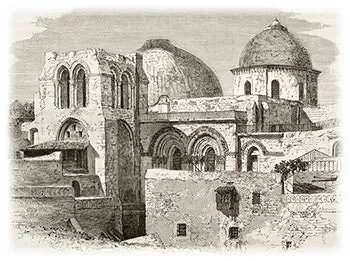 However, Procopius does not openly state that the breastplate was among the "vessels of the Jews."" It appears that these spoils of war were placed by Emperor Justinian (483-565 A.D.) of the Byzantine Empire, into the church of St. Sophia. Some time later, the emperor heard from a certain Jew that the treasures of the temple would only bring misfortune if they are kept anywhere outside of Jerusalem. He realized that maybe that had contributed to the fall of the Roman Empire, and hoping to avoid a similar fate to the Byzantine Empire, he promptly shipped the Jewish treasures to the Church of the Holy Sepulchre back in Jerusalem."
However, Procopius does not openly state that the breastplate was among the "vessels of the Jews."" It appears that these spoils of war were placed by Emperor Justinian (483-565 A.D.) of the Byzantine Empire, into the church of St. Sophia. Some time later, the emperor heard from a certain Jew that the treasures of the temple would only bring misfortune if they are kept anywhere outside of Jerusalem. He realized that maybe that had contributed to the fall of the Roman Empire, and hoping to avoid a similar fate to the Byzantine Empire, he promptly shipped the Jewish treasures to the Church of the Holy Sepulchre back in Jerusalem."
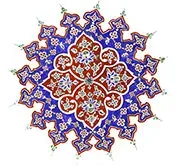 Jerusalem was captured again in 615 A.D. by the Sassanian-Persian King Khusrau II. The Sassanian Empire was then taken over by Mohammedan Arabs in 637 A.D., so the breastplate may have fallen into the hands of the Arabs or may have stayed "buried in some unknown treasure chamber of one of the old Persian capitals."" It is also possible that the breastplate may have remained with the Jews, as there were close to 26,000 Jewish men fighting alongside the Sassanian Persians to gain control of Jerusalem."
Jerusalem was captured again in 615 A.D. by the Sassanian-Persian King Khusrau II. The Sassanian Empire was then taken over by Mohammedan Arabs in 637 A.D., so the breastplate may have fallen into the hands of the Arabs or may have stayed "buried in some unknown treasure chamber of one of the old Persian capitals."" It is also possible that the breastplate may have remained with the Jews, as there were close to 26,000 Jewish men fighting alongside the Sassanian Persians to gain control of Jerusalem."
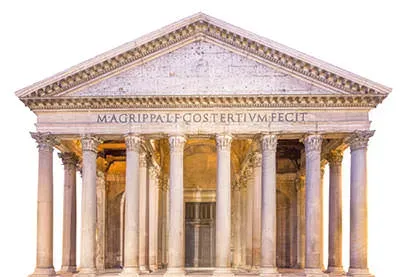 The fact that each stone within the breastplate bore the inscription of the name of a tribe would have significantly contributed to the preservation of the breastplate in the Roman Empire. No one would cut the gemstones out of the breastplate to fashion them into some other jewelry because chipping away at the inscription would remove too much of the actual stone. In addition, the gemstones in the breastplate were unlikely to be expensive and highly valuable, especially if they were made after the Jewish return from the Babylonian captivity, with limited resources. When Josephus originally wrote about their greatness, he most likely exaggerated out of national pride, a trait that was common to Oriental writers at that time.
The fact that each stone within the breastplate bore the inscription of the name of a tribe would have significantly contributed to the preservation of the breastplate in the Roman Empire. No one would cut the gemstones out of the breastplate to fashion them into some other jewelry because chipping away at the inscription would remove too much of the actual stone. In addition, the gemstones in the breastplate were unlikely to be expensive and highly valuable, especially if they were made after the Jewish return from the Babylonian captivity, with limited resources. When Josephus originally wrote about their greatness, he most likely exaggerated out of national pride, a trait that was common to Oriental writers at that time.
 If we are to assume that the Arabs claimed possession of the breastplate, they would probably have regarded it as a precious relic, since Moses and other heroes of the Old Testament were regarded as holy in the eyes of the Mohammedans. However, the Arabs that conquered the Persian Empire were not archeologists and would not have deciphered between ancient Hebrew letters on the breastplate and everyday Persian characters. They probably lumped the breastplate together with the rest of the Persian treasure, since there's no mention of the breastplate in any of the Mohammedan writings following the conquest of Persia. The Persians themselves would not have regarded the breastplate as anything special since their Zoroastrian religion had no connection to it.
If we are to assume that the Arabs claimed possession of the breastplate, they would probably have regarded it as a precious relic, since Moses and other heroes of the Old Testament were regarded as holy in the eyes of the Mohammedans. However, the Arabs that conquered the Persian Empire were not archeologists and would not have deciphered between ancient Hebrew letters on the breastplate and everyday Persian characters. They probably lumped the breastplate together with the rest of the Persian treasure, since there's no mention of the breastplate in any of the Mohammedan writings following the conquest of Persia. The Persians themselves would not have regarded the breastplate as anything special since their Zoroastrian religion had no connection to it.
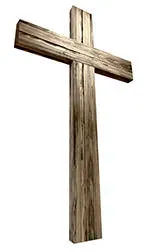 In 628 A.D., a few years before the Mohammedan invasion of Persia, the greatest Christian relic, the actual cross on which Christ died was handed over to the Greek Emperor Heraclius. It was originally discovered by Helena, mother of Constantine the Great, and surrendered to the Greek by Kobad II, the son of Khusrau II of Sassanian-Persian Empire upon signing of a peace treaty between the Eastern and Sassanian Empires. The cross was one of the sacred objects looted to Persia from Jerusalem in 615 A.D. by King Khusaru II of Persia. It was said to be guarded carefully by Sira, Khusaru's Christian wife.
In 628 A.D., a few years before the Mohammedan invasion of Persia, the greatest Christian relic, the actual cross on which Christ died was handed over to the Greek Emperor Heraclius. It was originally discovered by Helena, mother of Constantine the Great, and surrendered to the Greek by Kobad II, the son of Khusrau II of Sassanian-Persian Empire upon signing of a peace treaty between the Eastern and Sassanian Empires. The cross was one of the sacred objects looted to Persia from Jerusalem in 615 A.D. by King Khusaru II of Persia. It was said to be guarded carefully by Sira, Khusaru's Christian wife.
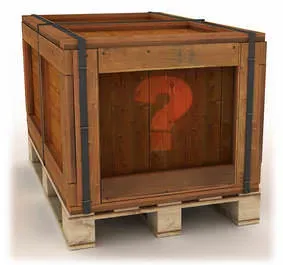 It is possible that there were many other religious objects looted from Jerusalem to Persia, but due to the unique nature of the cross, the most important relic, the historians neglected to mention the other sacred objects. The cross was briefly restored to Jerusalem by the Greek Emperor Heraclius in 629 A.D., only to fall into the hands of the Mohammedan Arabs in 637 A.D. following their conquest of Jerusalem. Therefore, if the breastplate were moved back to Jerusalem along with the cross, it would have ended up with the Arabs as well. And so, the fate of the most precious gems in history remains shrouded in mystery.
It is possible that there were many other religious objects looted from Jerusalem to Persia, but due to the unique nature of the cross, the most important relic, the historians neglected to mention the other sacred objects. The cross was briefly restored to Jerusalem by the Greek Emperor Heraclius in 629 A.D., only to fall into the hands of the Mohammedan Arabs in 637 A.D. following their conquest of Jerusalem. Therefore, if the breastplate were moved back to Jerusalem along with the cross, it would have ended up with the Arabs as well. And so, the fate of the most precious gems in history remains shrouded in mystery.
 A unique interpretation of the powers of Aaron's breastplate is described in a book titled Psychocraft, by C. H. Emerson, published in 1911. According to the author, the Urim and Thummim consisted of 12 stones that were hidden inside the breastplate. Those stones were duplicates of the gemstones engraved with the names of the tribes. When the stones were shaken and then allowed to settle, three of the stones would become visible through a hole in the breastplate. The different combinations of color would serve as pre-arranged answers to questions asked of the oracle.
A unique interpretation of the powers of Aaron's breastplate is described in a book titled Psychocraft, by C. H. Emerson, published in 1911. According to the author, the Urim and Thummim consisted of 12 stones that were hidden inside the breastplate. Those stones were duplicates of the gemstones engraved with the names of the tribes. When the stones were shaken and then allowed to settle, three of the stones would become visible through a hole in the breastplate. The different combinations of color would serve as pre-arranged answers to questions asked of the oracle.
 Lieutenant Charles Totten (1851-1908), an American professor of military tactics and an influential advocate of British Israelism, wrote extensively about how the Anglo-Saxons of the United States and Great Britain are the long lost tribes of Menasseh and Ephraim, and how King George V is a direct descendant of the Biblical King David. It is written in Genesis that the tribe of Joseph was split into two tribes, Ephraim being Joseph's youngest son and Menasseh being the oldest. Ephraim and Menasseh took the place of Levi, the tribe that was assigned the priestly duties and did not participate in the division of the land according to tribes.
Lieutenant Charles Totten (1851-1908), an American professor of military tactics and an influential advocate of British Israelism, wrote extensively about how the Anglo-Saxons of the United States and Great Britain are the long lost tribes of Menasseh and Ephraim, and how King George V is a direct descendant of the Biblical King David. It is written in Genesis that the tribe of Joseph was split into two tribes, Ephraim being Joseph's youngest son and Menasseh being the oldest. Ephraim and Menasseh took the place of Levi, the tribe that was assigned the priestly duties and did not participate in the division of the land according to tribes.
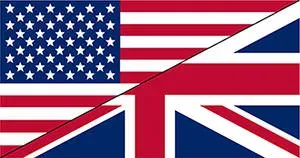 Jacob specifically blessed Ephraim first, despite Joseph's protest that Menasseh is older and deserves to be blessed first. To this, Jacob replied that he is aware the Ephraim is younger, but it is Ephraim who is destined to be greater, and it is from Ephraim that will come "a multitude of nations."" This description seems to fit the United States best, which is truly a multitude of nations, but Lieutenant Charles Totten still believed the Ephraim referred to Great Britain instead."
Jacob specifically blessed Ephraim first, despite Joseph's protest that Menasseh is older and deserves to be blessed first. To this, Jacob replied that he is aware the Ephraim is younger, but it is Ephraim who is destined to be greater, and it is from Ephraim that will come "a multitude of nations."" This description seems to fit the United States best, which is truly a multitude of nations, but Lieutenant Charles Totten still believed the Ephraim referred to Great Britain instead."
According to the Rabbinical interpretation of Bamidbar, or Numbers, dating back to at least 12th century and possibly earlier, the twelve tribes were listed in a particular order and set up camp in the desert with the following corresponding colored gemstones:
| Tribe | Gemstone | Color of Gemstone |
| Reuben | Odem | Red |
| Simeon | Pitdah | Green |
| Levi | Bareketh | White, Black, Red |
| Judah | Jophek | Sky-blue |
| Issachar | Sappir | Black (like Stibium) |
| Zebulun | Yahalom | White |
| Dan | Leshem | Sapphire color |
| Gad | Shebo | Gray |
| Naphtali | Ahlamah | Wine color |
| Asscher | Tarshish | Pearl color |
| Joseph | Shoham | Very Black |
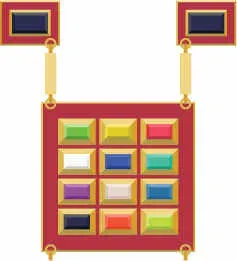 When attempting to identify the stones mentioned above, it is important to note that the "breastplate of Aaron"" and the one described by Josephus and brought to Rome by Titus after the fall of Jerusalem in 70 A.D. are two entirely different breastplates. Aaron's breastplate, if it even existed, must have contained gemstones used by Egyptians of the 13th and 14th centuries B.C., which were borrowed by the Israelites from the Egyptians at the time of the Exodus. The later breastplate contained gemstones of the second Temple, and we will rely on the early Greek and Latin versions of the Old Testament, the Treatise of the Precious Stones by Theophrastus, and the Natural History of Pliny, the oldest Encyclopedia of the Roman Empire, to interpret their names.
When attempting to identify the stones mentioned above, it is important to note that the "breastplate of Aaron"" and the one described by Josephus and brought to Rome by Titus after the fall of Jerusalem in 70 A.D. are two entirely different breastplates. Aaron's breastplate, if it even existed, must have contained gemstones used by Egyptians of the 13th and 14th centuries B.C., which were borrowed by the Israelites from the Egyptians at the time of the Exodus. The later breastplate contained gemstones of the second Temple, and we will rely on the early Greek and Latin versions of the Old Testament, the Treatise of the Precious Stones by Theophrastus, and the Natural History of Pliny, the oldest Encyclopedia of the Roman Empire, to interpret their names.
We will now attempt to define the gemstones used in the High Priest's breastplate."
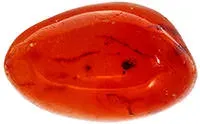 I. Odem ï¾– According to the origin of this Hebrew word we are led to believe that the gemstone used was a red one, most likely carnelian. We know that the hieroglyphics from the Egyptian "Book of the Dead"" utilized carnelian amulets. Early Babylonian cylinders were made out of carnelian as well. It was probably obtained from Arabia."
I. Odem ï¾– According to the origin of this Hebrew word we are led to believe that the gemstone used was a red one, most likely carnelian. We know that the hieroglyphics from the Egyptian "Book of the Dead"" utilized carnelian amulets. Early Babylonian cylinders were made out of carnelian as well. It was probably obtained from Arabia."
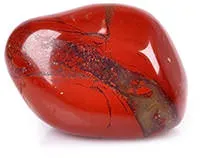 Most ancient historians, such as the Greek Septuagint, Latin Vulgate, and Epiphanius translate carnelian as "sardius."" Josephus calls it
Most ancient historians, such as the Greek Septuagint, Latin Vulgate, and Epiphanius translate carnelian as "sardius."" Josephus calls it ![]() sard-
sard-![]() onyx. The Egyptians used the word ""chenem"" for red stones, which included red
onyx. The Egyptians used the word ""chenem"" for red stones, which included red ![]() jasper, red feldspar, and carnelian. However, red jasper was the one most widely used. Therefore, it is most probable that the first breastplate's red stone was red jasper, and the second breastplate, most likely carnelian. The name ""Reuben"" was engraved on the Odem stone, the first one of the twelve tribes."
jasper, red feldspar, and carnelian. However, red jasper was the one most widely used. Therefore, it is most probable that the first breastplate's red stone was red jasper, and the second breastplate, most likely carnelian. The name ""Reuben"" was engraved on the Odem stone, the first one of the twelve tribes."
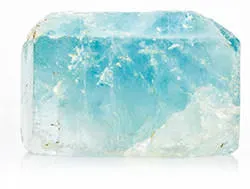 II. Pitdah ï¾– There's little doubt that this gemstone refers to the ancient topazius, since according to Pliny, it is of a greenish hue. In modern times, this gemstone would probably be chrysolite or
II. Pitdah ï¾– There's little doubt that this gemstone refers to the ancient topazius, since according to Pliny, it is of a greenish hue. In modern times, this gemstone would probably be chrysolite or ![]() peridot. A legend told by Pliny attempts to find an origin for the word "topazius."" It tells of a remote little island in the Red Sea called Topazos, which is derived from ""topazein,"" which means ""to speculate,"" since the island is difficult to find. However, the Hebrew word ""Pitdah"" could have been derived from Sanskrit's ""pita,"" meaning yellow, and therefore may have referred to a yellow stone, possibly our
peridot. A legend told by Pliny attempts to find an origin for the word "topazius."" It tells of a remote little island in the Red Sea called Topazos, which is derived from ""topazein,"" which means ""to speculate,"" since the island is difficult to find. However, the Hebrew word ""Pitdah"" could have been derived from Sanskrit's ""pita,"" meaning yellow, and therefore may have referred to a yellow stone, possibly our ![]() topaz after all."
topaz after all."
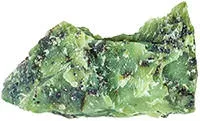 Sir William Mathew Flinders Petrie (1853-1942), an English archaeologist specializing in Egyptian artifacts, believed Pitdah to be yellow serpentine that was used in ancient Egypt. Serpentine was called "meh"" in Egyptian and was widely used in amulets. And if we believe that the gemstone was light green, we can then assume that the second stone in the first (Aaron's) breastplate was a light green serpentine and in the second breastplate a
Sir William Mathew Flinders Petrie (1853-1942), an English archaeologist specializing in Egyptian artifacts, believed Pitdah to be yellow serpentine that was used in ancient Egypt. Serpentine was called "meh"" in Egyptian and was widely used in amulets. And if we believe that the gemstone was light green, we can then assume that the second stone in the first (Aaron's) breastplate was a light green serpentine and in the second breastplate a ![]() peridot. The name ""Simeon"" was engraved on the Pitdah stone, the second of the twelve tribes."
peridot. The name ""Simeon"" was engraved on the Pitdah stone, the second of the twelve tribes."
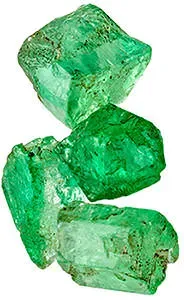 III. Bareketh ï¾– Most historians believe that this gemstone is
III. Bareketh ï¾– Most historians believe that this gemstone is ![]() emerald, known as "smaragdus"" in Latin. Emerald mines were widespread on Mount Zabarah in Nubia and emerald was widely used in Egypt at the time of the first breastplate. Although, according to Sir William Mathew Flinders Petrie, other green stones were sometimes used as ""smaragdus."" In a passage in Revelation IV- 3, a rainbow is called ""smaragdus,"" suggesting that perhaps it was a colorless rock crystal that allowed light to shine through, although green emerald could have still been used in the rainbow. Whether the breastplate's third stone was an emerald is still debatable, with some authorities suggesting that it was most likely green feldspar. It was known as ""uat"" in Egyptian and was often used in Egyptian amulets. The King James version of the Bible (English translation of 1611) renders carbuncle as the third stone instead of the traditional fourth stone. The name ""Levi"" was engraved on the Bareketh stone, the third of the twelve tribes."
emerald, known as "smaragdus"" in Latin. Emerald mines were widespread on Mount Zabarah in Nubia and emerald was widely used in Egypt at the time of the first breastplate. Although, according to Sir William Mathew Flinders Petrie, other green stones were sometimes used as ""smaragdus."" In a passage in Revelation IV- 3, a rainbow is called ""smaragdus,"" suggesting that perhaps it was a colorless rock crystal that allowed light to shine through, although green emerald could have still been used in the rainbow. Whether the breastplate's third stone was an emerald is still debatable, with some authorities suggesting that it was most likely green feldspar. It was known as ""uat"" in Egyptian and was often used in Egyptian amulets. The King James version of the Bible (English translation of 1611) renders carbuncle as the third stone instead of the traditional fourth stone. The name ""Levi"" was engraved on the Bareketh stone, the third of the twelve tribes."
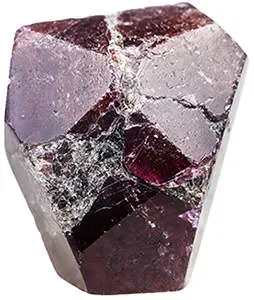 IV. Nophek ï¾– The Vulgate (Latin version of the Bible) calls this fourth stone "carbunculus,"" meaning a ""glowing coal,"" a term used for certain gemstones characterized by brilliant red color, such as rubies and garnets. Although it is possible that the second breastplate contained an Oriental
IV. Nophek ï¾– The Vulgate (Latin version of the Bible) calls this fourth stone "carbunculus,"" meaning a ""glowing coal,"" a term used for certain gemstones characterized by brilliant red color, such as rubies and garnets. Although it is possible that the second breastplate contained an Oriental ![]() ruby, it could not have been present in the first breastplate, as rubies were not existent in ancient Egypt at that time. Most sources believe the first breastplate to contain the almandine
ruby, it could not have been present in the first breastplate, as rubies were not existent in ancient Egypt at that time. Most sources believe the first breastplate to contain the almandine ![]() garnet, although the Authorized Version (King James Version of the Bible of 1611) believes the fourth stone to be an
garnet, although the Authorized Version (King James Version of the Bible of 1611) believes the fourth stone to be an ![]() emerald. The name ""Judah"" was engraved on the Nophek stone, the fourth of the twelve tribes."
emerald. The name ""Judah"" was engraved on the Nophek stone, the fourth of the twelve tribes."
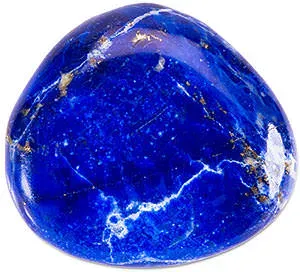 V. Sappir ï¾– All the versions of the Bible render this gemstone as "sapphirus."" However, this stone could not have been our
V. Sappir ï¾– All the versions of the Bible render this gemstone as "sapphirus."" However, this stone could not have been our ![]() sapphire, since both Theophrastus and Pliny describe ""sapphirus"" as having golden flecks.
sapphire, since both Theophrastus and Pliny describe ""sapphirus"" as having golden flecks. ![]() Lapis lazuli was most likely the beautiful blue stone they meant, which often contained specks of pyrites that gave it its golden sheen. The early Egyptians named this stone ""chesbet"" and used it as amulets and valuable gifts to their rulers. Lapis-lazuli was mined as early as 4,000 B.C.E. and is still mined today. The Egyptian high-priest was said to have worn an image of Mat, the Goddess of Truth, suspended from his neck. It was made from Lapis-lazuli."
Lapis lazuli was most likely the beautiful blue stone they meant, which often contained specks of pyrites that gave it its golden sheen. The early Egyptians named this stone ""chesbet"" and used it as amulets and valuable gifts to their rulers. Lapis-lazuli was mined as early as 4,000 B.C.E. and is still mined today. The Egyptian high-priest was said to have worn an image of Mat, the Goddess of Truth, suspended from his neck. It was made from Lapis-lazuli."
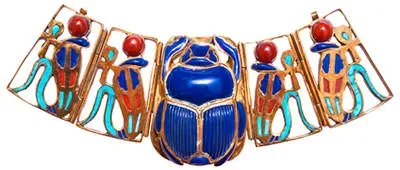 The name Lapis-Lazuli is derived from "
The name Lapis-Lazuli is derived from "![]() lapis,"" the Latin word for ""stone,"" and ""lajuward,"" the Persian word for ""stone."" Our present day ""azure"" is also derived from the Persian ""lajuward."" According to Pliny, this stone was too soft to contain any engravings, but that would not have prevented lapis-lazuli from being used in the breastplate. Because lapis-lazuli was popular in ancient Egypt as well as in the Greek and Roman times, it is very likely that it was used in both the earlier and later breastplates. The name ""Issachar"" was engraved on the Sappir stone, the fifth of the twelve tribes."
lapis,"" the Latin word for ""stone,"" and ""lajuward,"" the Persian word for ""stone."" Our present day ""azure"" is also derived from the Persian ""lajuward."" According to Pliny, this stone was too soft to contain any engravings, but that would not have prevented lapis-lazuli from being used in the breastplate. Because lapis-lazuli was popular in ancient Egypt as well as in the Greek and Roman times, it is very likely that it was used in both the earlier and later breastplates. The name ""Issachar"" was engraved on the Sappir stone, the fifth of the twelve tribes."
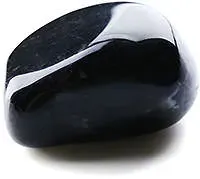 VI. Yahalom ï¾– According to Josephus and Septuagint (the Greek version of the Bible), the sixth stone of the breastplate is green
VI. Yahalom ï¾– According to Josephus and Septuagint (the Greek version of the Bible), the sixth stone of the breastplate is green ![]() jasper or
jasper or ![]() jade. According to the original Hebrew text, "Yashpeh"" was the sixth stone and ""Yahalom"" occupied the twelfth stone slot. Some Hebrew sources, Luther in his German version of the Bible, and the Authorized Version (King James Version of the Bible of 1611) translate Yahalom as
jade. According to the original Hebrew text, "Yashpeh"" was the sixth stone and ""Yahalom"" occupied the twelfth stone slot. Some Hebrew sources, Luther in his German version of the Bible, and the Authorized Version (King James Version of the Bible of 1611) translate Yahalom as ![]() diamond since its meaning is ""to smite."" This name seems appropriate for diamond since it can cut or ""smite"" other gemstones because of its extreme hardness. The diamond, however, was not used for the purpose of cutting other stones in the early times. It could only have been used for engraving in the 5th century B.C. Since it was improbable that diamond was used for stone cutting at that point, we are led to believe that ""Yahalom"" was actually an
diamond since its meaning is ""to smite."" This name seems appropriate for diamond since it can cut or ""smite"" other gemstones because of its extreme hardness. The diamond, however, was not used for the purpose of cutting other stones in the early times. It could only have been used for engraving in the 5th century B.C. Since it was improbable that diamond was used for stone cutting at that point, we are led to believe that ""Yahalom"" was actually an ![]() onyx, which was the common stone used for engraving at that time. In fact, the Greek version of the Bible translates ""Yahalom"" as onyx, although it places it in the twelfth slot instead of the sixth slot of the breastplate. The name ""Zebulun"" was engraved on the Yahalom stone, the sixth of the twelve tribes."
onyx, which was the common stone used for engraving at that time. In fact, the Greek version of the Bible translates ""Yahalom"" as onyx, although it places it in the twelfth slot instead of the sixth slot of the breastplate. The name ""Zebulun"" was engraved on the Yahalom stone, the sixth of the twelve tribes."
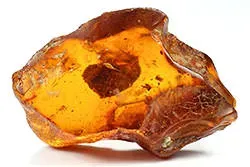 VII. Leshem ï¾– No stone in the breastplate is harder to interpret than this one. According to Josephus, Septuagint (the Greek version of the Bible), and Vulgate (Latin version of the Bible), ligurius is used as the seventh stone. This gemstone most likely refers to
VII. Leshem ï¾– No stone in the breastplate is harder to interpret than this one. According to Josephus, Septuagint (the Greek version of the Bible), and Vulgate (Latin version of the Bible), ligurius is used as the seventh stone. This gemstone most likely refers to ![]() amber, which is unsuitable as the stone in the breastplate. Amber was called ligurius probably because amber was gathered from the Baltic shores and brought to Liguria, Northern Italy, from where it was shipped to Greece and the Orient.
amber, which is unsuitable as the stone in the breastplate. Amber was called ligurius probably because amber was gathered from the Baltic shores and brought to Liguria, Northern Italy, from where it was shipped to Greece and the Orient.
 The Greeks, however, called
The Greeks, however, called ![]() amber "electron,"" and the name ligurion was later used on a variety of jacinth which was similar in color to amber, and eventually to other varieties of jacinth. The original word was apparently ligurion, which was later changed to lyncurion, which meant the ""urine of the lynx."" That's how the myth came to be that the stone itself was the solidified urine of the lynx."
amber "electron,"" and the name ligurion was later used on a variety of jacinth which was similar in color to amber, and eventually to other varieties of jacinth. The original word was apparently ligurion, which was later changed to lyncurion, which meant the ""urine of the lynx."" That's how the myth came to be that the stone itself was the solidified urine of the lynx."
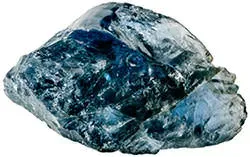 Theophrastus, the Greek historian, may have used the term lyncurion for
Theophrastus, the Greek historian, may have used the term lyncurion for ![]() sapphire as well as for jacinth, because he heavily stressed the coldness of the stone, and sapphire was particularly known for its coldness, as well as certain dense varieties of jacinth. It is very likely that sapphire was the "leshem"" stone of the Second Temple breastplate, although it could not have been the stone in the first breastplate since sapphire was not used in Egypt at that time."
sapphire as well as for jacinth, because he heavily stressed the coldness of the stone, and sapphire was particularly known for its coldness, as well as certain dense varieties of jacinth. It is very likely that sapphire was the "leshem"" stone of the Second Temple breastplate, although it could not have been the stone in the first breastplate since sapphire was not used in Egypt at that time."
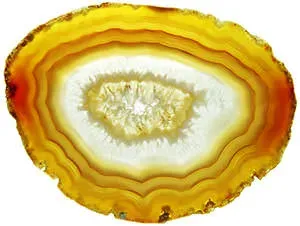 Heinrich Karl Brugsch (1827-1894), a German Egyptologist, believed that the Egyptian stone "neshem,"" a brown
Heinrich Karl Brugsch (1827-1894), a German Egyptologist, believed that the Egyptian stone "neshem,"" a brown ![]() agate, could have easily been the Hebrew ""leshem."" Since the Egyptians used gemstone colors interchangeably, a reddish or a yellow-brown agate was most likely the ""leshem"" stone on the first breastplate. The name ""Joseph"" was engraved on the ""leshem"" stone, the seventh of the twelve tribes."
agate, could have easily been the Hebrew ""leshem."" Since the Egyptians used gemstone colors interchangeably, a reddish or a yellow-brown agate was most likely the ""leshem"" stone on the first breastplate. The name ""Joseph"" was engraved on the ""leshem"" stone, the seventh of the twelve tribes."
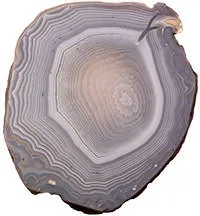 VIII. Shebo ï¾– All the authorities, including Josephus, universally agree that the eighth stone of the breastplate was
VIII. Shebo ï¾– All the authorities, including Josephus, universally agree that the eighth stone of the breastplate was ![]() agate. This stone was highly prized in ancient times, and many talismanic and therapeutic properties were bestowed upon it. The origin of the word "shebo"" suggested that a banded agate was used in the breastplate, most probably gray and white bands that were common in Egyptian work at that time. It would have contrasted nicely with the reddish or yellow-brown agate of a uniform color that occupied the place of the seventh stone on the first breastplate. The second breastplate may have contained any variety of the banded agate. The name ""Benjamin"" was engraved on the ""shebo"" stone, the eighth of the twelve tribes."
agate. This stone was highly prized in ancient times, and many talismanic and therapeutic properties were bestowed upon it. The origin of the word "shebo"" suggested that a banded agate was used in the breastplate, most probably gray and white bands that were common in Egyptian work at that time. It would have contrasted nicely with the reddish or yellow-brown agate of a uniform color that occupied the place of the seventh stone on the first breastplate. The second breastplate may have contained any variety of the banded agate. The name ""Benjamin"" was engraved on the ""shebo"" stone, the eighth of the twelve tribes."
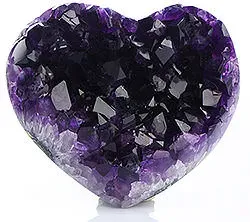 IX. Ahlamah ï¾– All sources agree that this stone refers to
IX. Ahlamah ï¾– All sources agree that this stone refers to ![]() amethyst. Ahlamah was not an Oriental amethyst, a variety of corundum, but rather a dark blue or purple variety of
amethyst. Ahlamah was not an Oriental amethyst, a variety of corundum, but rather a dark blue or purple variety of ![]() quartz, supplied by Arabia and Syria. Amethyst was well known in ancient Egypt, and was probably called "hemag."" The Egyptian ""Book of the Dead,"" an ancient collection of spells designed for the deceased to help navigate the afterlife, mentions a heart made of ""hemag."" Two such heart-shaped amulets are preserved in the Boulaq Museum, the museum of Egyptian antiquities in Cairo."
quartz, supplied by Arabia and Syria. Amethyst was well known in ancient Egypt, and was probably called "hemag."" The Egyptian ""Book of the Dead,"" an ancient collection of spells designed for the deceased to help navigate the afterlife, mentions a heart made of ""hemag."" Two such heart-shaped amulets are preserved in the Boulaq Museum, the museum of Egyptian antiquities in Cairo."
 The origin of the Hebrew name for Ahlamah is "halom,"" meaning to dream, which suggests that this stone possessed dream-inducing qualities. According to the Greek translation, Ahlamah means ""enemy"" or to ""prevent intoxication or drunkenness."" This stone effectively retained its popularity in the Greek and Roman periods as a stone of beauty and power; therefore, it is most probable that Ahlamah was used in both the first and the second breastplates. The name ""Dan"" was engraved on this stone, the ninth of the twelve tribes."
The origin of the Hebrew name for Ahlamah is "halom,"" meaning to dream, which suggests that this stone possessed dream-inducing qualities. According to the Greek translation, Ahlamah means ""enemy"" or to ""prevent intoxication or drunkenness."" This stone effectively retained its popularity in the Greek and Roman periods as a stone of beauty and power; therefore, it is most probable that Ahlamah was used in both the first and the second breastplates. The name ""Dan"" was engraved on this stone, the ninth of the twelve tribes."
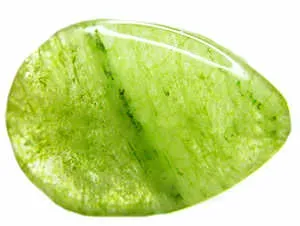 X. Tarshish ï¾– According to Septuagint (the Greek version of the Bible), and Josephus, this stone translates as chrysolite, while the Authorized Version (King James Version of the Bible of 1611) renders it as
X. Tarshish ï¾– According to Septuagint (the Greek version of the Bible), and Josephus, this stone translates as chrysolite, while the Authorized Version (King James Version of the Bible of 1611) renders it as ![]() beryl. The
beryl. The ![]() topaz used by the ancients is our modern day chrysolite, or
topaz used by the ancients is our modern day chrysolite, or ![]() peridot, while the term chrysolite was used for our modern day topaz. The word chrysolite is derived from the Greek "golden stone."""
peridot, while the term chrysolite was used for our modern day topaz. The word chrysolite is derived from the Greek "golden stone."""
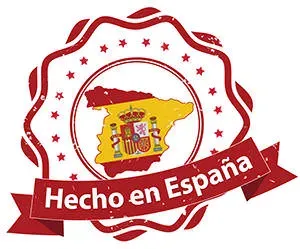 "Tarshish"" may have originated from Tartessus, an important commercial center in Spain, used by the Phoenicians. This stone was not our Oriental Topaz, which is a variety of corundum, nor was it a true
"Tarshish"" may have originated from Tartessus, an important commercial center in Spain, used by the Phoenicians. This stone was not our Oriental Topaz, which is a variety of corundum, nor was it a true ![]() topaz, but rather a variety of
topaz, but rather a variety of ![]() quartz, which was common in Spain at that time. This stone was entirely black but was heated to a deep brown, and eventually decolorized to a colorless, transparent gem."
quartz, which was common in Spain at that time. This stone was entirely black but was heated to a deep brown, and eventually decolorized to a colorless, transparent gem."
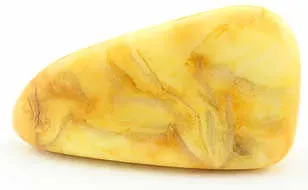 Ancient Egyptian records frequently mention a yellow stone called "thehen,"" from which amulets were made. It may have been either a
Ancient Egyptian records frequently mention a yellow stone called "thehen,"" from which amulets were made. It may have been either a ![]() topaz or a yellow
topaz or a yellow ![]() jasper. The latter was often used in Egypt from a very early time, while topaz was only introduced at 500 B.C.E. at the earliest. So despite the similarity of the word Tarshish and the Tartessus center in Spain, we are more inclined to believe that Tarshish was a yellow jasper, common to Egypt, at the time of the first breastplate. Yellow topaz may have been the stone used in the second breastplate. The name ""Naphtali"" was engraved on this stone, the tenth of the twelve tribes."
jasper. The latter was often used in Egypt from a very early time, while topaz was only introduced at 500 B.C.E. at the earliest. So despite the similarity of the word Tarshish and the Tartessus center in Spain, we are more inclined to believe that Tarshish was a yellow jasper, common to Egypt, at the time of the first breastplate. Yellow topaz may have been the stone used in the second breastplate. The name ""Naphtali"" was engraved on this stone, the tenth of the twelve tribes."
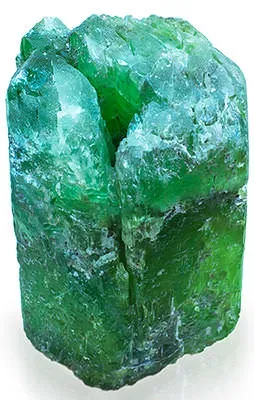 XI. Shoham ï¾– Besides being the eleventh gemstone in the breastplate, the High Priest also wore two Shoham stones on his shoulders, each one engraved with six names of the tribes. According to Septuagint (the Greek version of the Bible), this stone is translated as
XI. Shoham ï¾– Besides being the eleventh gemstone in the breastplate, the High Priest also wore two Shoham stones on his shoulders, each one engraved with six names of the tribes. According to Septuagint (the Greek version of the Bible), this stone is translated as ![]() beryl, but in the Authorized Version (King James Version of the Bible of 1611) and the Douai Version, used by Roman Catholics, this stone is actually
beryl, but in the Authorized Version (King James Version of the Bible of 1611) and the Douai Version, used by Roman Catholics, this stone is actually ![]() onyx. Both ancient historians, Diodorus Siculus (90 BCE ï¾– 30 BCE) and Dionysius Periegetes (117 BCE ï¾– 138 BCE), render it as beryl in their writings. Theophrastus (371 BCE ï¾– 287 BCE), in his Treatise of Stones, writes that this stone may have been an
onyx. Both ancient historians, Diodorus Siculus (90 BCE ï¾– 30 BCE) and Dionysius Periegetes (117 BCE ï¾– 138 BCE), render it as beryl in their writings. Theophrastus (371 BCE ï¾– 287 BCE), in his Treatise of Stones, writes that this stone may have been an ![]() emerald, which is actually beryl with a slight mixture of chromium to give it its green coloration. High-quality beryls were brought in from India.
emerald, which is actually beryl with a slight mixture of chromium to give it its green coloration. High-quality beryls were brought in from India.
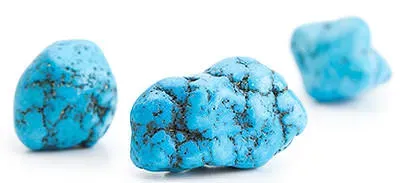 The author of this book believes that the Shoham stones worn by the High Priest in the Second Temple were aquamarines, which are actually blue beryls. As for the first breastplate, J.L. Myers speculates that they were malachites since they were familiar to the Egyptians at that time and were widely used as amulets. The Egyptians called malachite and all other green stones "mafek,"" and only at a later time was ""mafek"" used to denote
The author of this book believes that the Shoham stones worn by the High Priest in the Second Temple were aquamarines, which are actually blue beryls. As for the first breastplate, J.L. Myers speculates that they were malachites since they were familiar to the Egyptians at that time and were widely used as amulets. The Egyptians called malachite and all other green stones "mafek,"" and only at a later time was ""mafek"" used to denote ![]() beryl. However,
beryl. However, ![]() turquoise was a popular stone in Egypt at that point and was readily mined in the nearby Sinai Peninsula. Moreover, the light blue or blue-green color of turquoise would have contrasted better than the bright green malachite with the nearby
turquoise was a popular stone in Egypt at that point and was readily mined in the nearby Sinai Peninsula. Moreover, the light blue or blue-green color of turquoise would have contrasted better than the bright green malachite with the nearby ![]() jade on the breastplate. Therefore, the author concludes that turquoise would have been the most logical choice on the first breastplate. The name ""Gad"" was engraved on this stone, the eleventh of the twelve tribes."
jade on the breastplate. Therefore, the author concludes that turquoise would have been the most logical choice on the first breastplate. The name ""Gad"" was engraved on this stone, the eleventh of the twelve tribes."
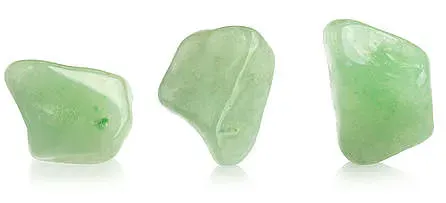 XII. Yashpeh ï¾– In the original Hebrew version, this stone occupied the sixth space on the breastplate, and all versions agreed that it was
XII. Yashpeh ï¾– In the original Hebrew version, this stone occupied the sixth space on the breastplate, and all versions agreed that it was ![]() jasper. The most valued jasper was the green variety. The talismanic and therapeutic attributes of green jasper were often mentioned in ancient scripts, particularly by Egyptian writings on medicine. Abel Remusat, a great French Orientalist, writing in 1820's, thought that the Yashpeh of the Hebrews and the green jasper of the Greeks and Romans was actually
jasper. The most valued jasper was the green variety. The talismanic and therapeutic attributes of green jasper were often mentioned in ancient scripts, particularly by Egyptian writings on medicine. Abel Remusat, a great French Orientalist, writing in 1820's, thought that the Yashpeh of the Hebrews and the green jasper of the Greeks and Romans was actually ![]() jade, either the nephrite or jadeite variety.
jade, either the nephrite or jadeite variety.
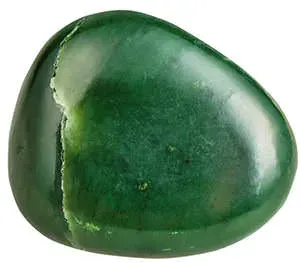 Jade was widely used in the Old and the New World and was believed to have magical properties. Jade's powers were eventually transferred to green
Jade was widely used in the Old and the New World and was believed to have magical properties. Jade's powers were eventually transferred to green ![]() jasper, though true
jasper, though true ![]() jade was always more valuable than jasper since it was so rare. Until very recently, jade was mined only in Turkestan, Burma, and New Zealand, and the origin of jade used in prehistoric relics is unknown to us. It seems most probable that the first breastplate contained a nephrite or a jadeite, and the later breastplate used a green jasper. The name "Assher"" was engraved on this stone, the last of the twelve tribes."
jade was always more valuable than jasper since it was so rare. Until very recently, jade was mined only in Turkestan, Burma, and New Zealand, and the origin of jade used in prehistoric relics is unknown to us. It seems most probable that the first breastplate contained a nephrite or a jadeite, and the later breastplate used a green jasper. The name "Assher"" was engraved on this stone, the last of the twelve tribes."
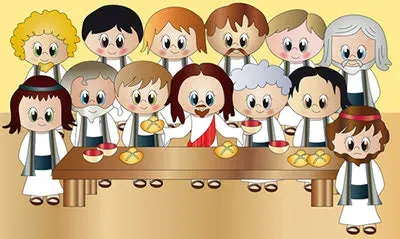 The stones set in the breastplate were regarded as highly significant to the Jewish people. Therefore, they are described in the book of Revelation as the foundation stones of the New Jerusalem. It is easy to substitute the twelve apostles for the twelve tribes, as well as the twelve angels, and later the twelve months, and the corresponding signs of the zodiac. Different variations exist in matching up the twelve stones with the apostles and are based on the Synoptic Gospels of Matthew, Mark, and Luke. Not every apostle is matched with the same stone in all sources. For example, Andrew is placed second in Mathew and Luke, but fourth in Mark. Another example is when Apostle Paul becomes the thirteenth apostle. Here is the list showing different variations among the three sources.
The stones set in the breastplate were regarded as highly significant to the Jewish people. Therefore, they are described in the book of Revelation as the foundation stones of the New Jerusalem. It is easy to substitute the twelve apostles for the twelve tribes, as well as the twelve angels, and later the twelve months, and the corresponding signs of the zodiac. Different variations exist in matching up the twelve stones with the apostles and are based on the Synoptic Gospels of Matthew, Mark, and Luke. Not every apostle is matched with the same stone in all sources. For example, Andrew is placed second in Mathew and Luke, but fourth in Mark. Another example is when Apostle Paul becomes the thirteenth apostle. Here is the list showing different variations among the three sources.
| Gospel of St. Mathew | Gospel of St. Mark | Gospel of St. Luke |
| Peter | Peter | Peter |
| Andrew | James | Andrew |
| James | John | James |
| John | Andrew | John |
| Philip | Philip | Philip |
| Bartholomew | Bartholomew | Bartholomew |
| Thomas | Mathew | Mathew |
| Mathew | Thomas | Thomas |
| James the Less | James the Less | James the Less |
| Thaddeus | Thaddeus | Simon Zelotes |
| Simon Zelotes | Simon Zelotes | Judas |
| Judas Iscariot | Judas Iscariot | Judas Iscariot |
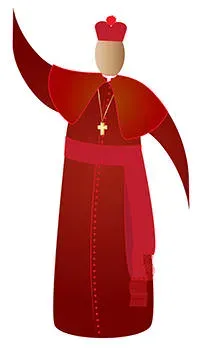 The significance of the twelve apocalyptic gemstones is summarized by Rabanus Maurus, Archbishop of Mainz (786-856) as follows:
The significance of the twelve apocalyptic gemstones is summarized by Rabanus Maurus, Archbishop of Mainz (786-856) as follows: ![]() jasper stands for the truth of faith,
jasper stands for the truth of faith, ![]() sapphire denotes the height of celestial hope,
sapphire denotes the height of celestial hope, ![]() chalcedony reveals the flame of inner charity,
chalcedony reveals the flame of inner charity, ![]() emerald stands for strength of faith in adversity; sardonyx portrays saints' humility in spite of their virtues,
emerald stands for strength of faith in adversity; sardonyx portrays saints' humility in spite of their virtues, ![]() sard represents the blood of the martyrs. Chrysolite signifies true spiritual preaching accompanied by miracles;
sard represents the blood of the martyrs. Chrysolite signifies true spiritual preaching accompanied by miracles; ![]() beryl stands for the ideal act of prophecy, and
beryl stands for the ideal act of prophecy, and ![]() topaz represents fervent meditation of prophecies, chrysoprase reveals the work of sacred martyrs and their reward; hyacinth demonstrates celestial joy of the learned in their high thoughts and their humble descent to human beings. Finally,
topaz represents fervent meditation of prophecies, chrysoprase reveals the work of sacred martyrs and their reward; hyacinth demonstrates celestial joy of the learned in their high thoughts and their humble descent to human beings. Finally, ![]() amethyst denotes the constant contemplation of the heavenly kingdom in humble souls.
amethyst denotes the constant contemplation of the heavenly kingdom in humble souls.